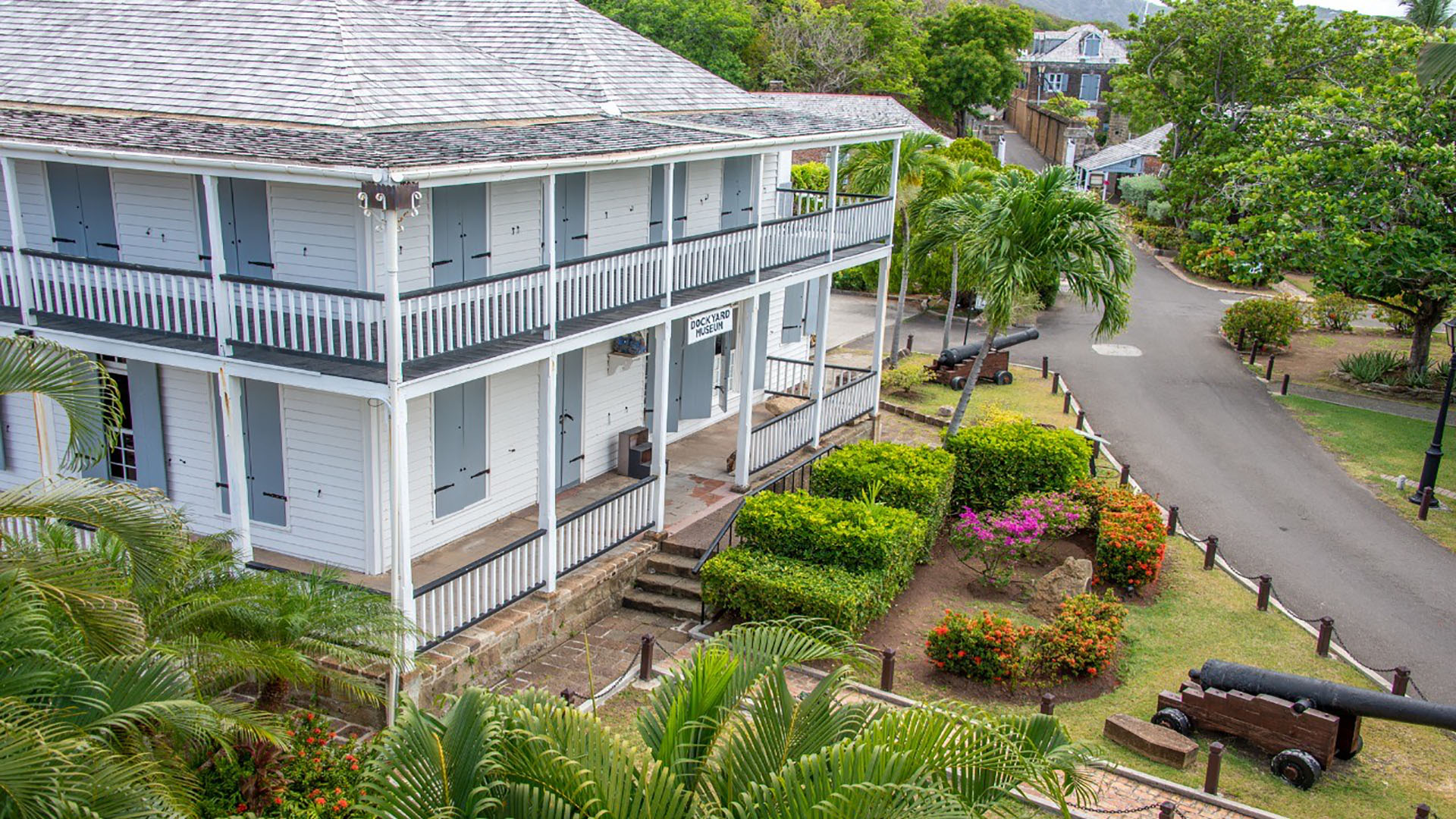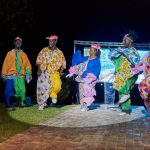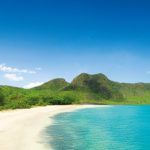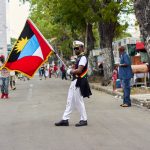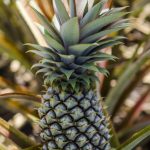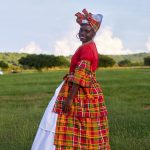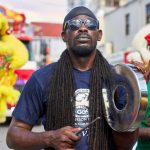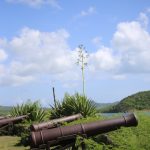Antiguans and Barbudans boast a rich, vibrant culture, shaped by our African heritage, British colonial history, and modern influences. This is evident in a number of ways such as our language, cuisine, architecture, religion, music, our sporting interests, our art and festivals to include Antigua’s carnival celebrations.
In Antigua and Barbuda, the beach is just the beginning. Visitors to the destination are encouraged to immerse themselves in the local culture – visit our museums, and interpretation centres for a deeper understanding of our people, and maritime heritage, sample our delicious local cuisine, enjoy the enchanting sounds of our music, dance to our our drums, the steelpan, iron band, calypso and soca music, take in a local cricket match or a game of warri, take a walking tour through our cultural sites, explore the city, our art studios, attend our festivals or just interact with the friendly people within our vibrant communities.
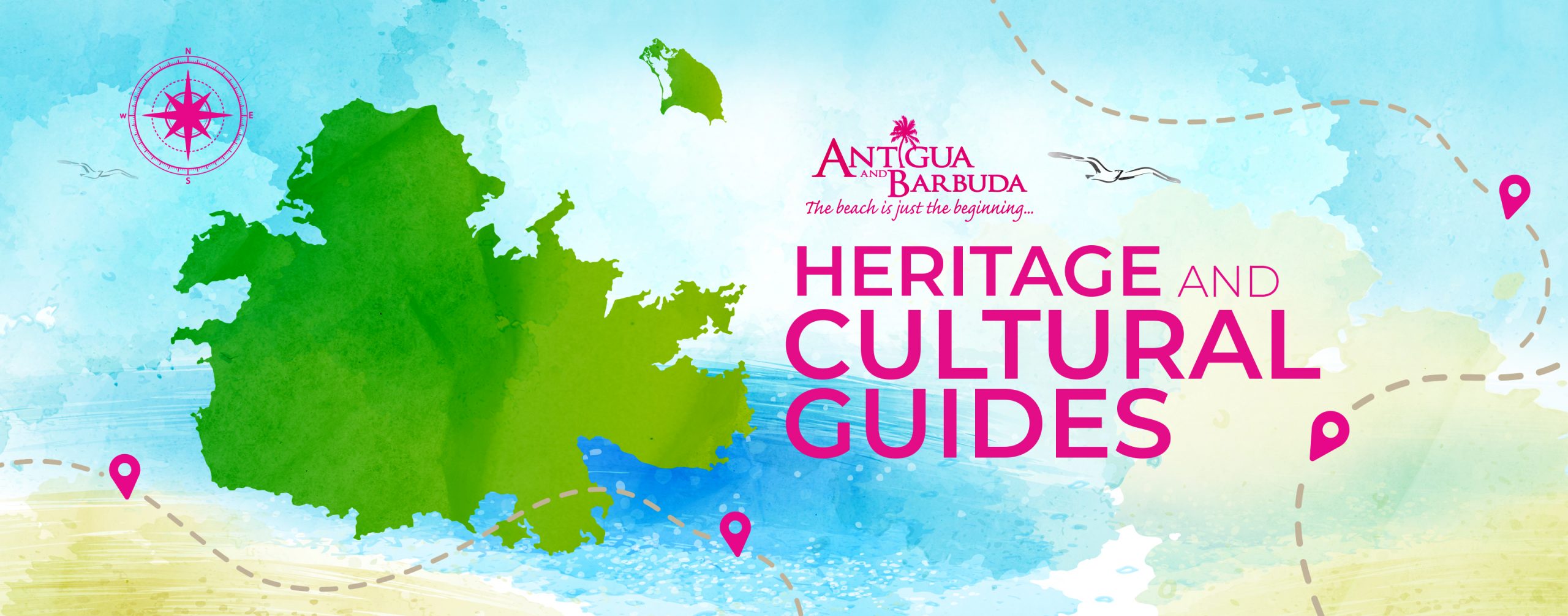
Antigua and Barbuda’s Heritage & Cultural Guides allow users to venture on a journey of exploration to sites of interest throughout Antigua and Barbuda.
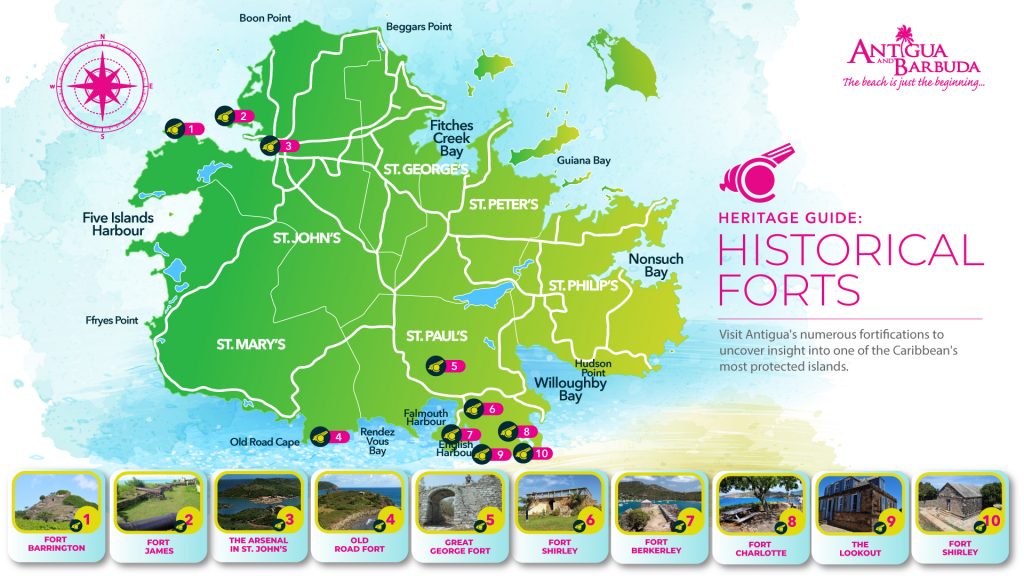
Antigua is blessed with a large number of fortifications and coastal batteries that reflect a violent colonial past. It was at one point in time, one of the most fortified places in the world. In the Age of Sail, the strategic position of Antigua in the Leeward Islands permitted rapid deployment of British naval frigates from the hurricane sheltered naval dockyard in English Harbour. It had to be protected at all cost. As a result, a fort or gun platform was built every two miles along the coastline. Today, the crumbling remains of many can still be seen. It is not possible to see them all in a single day. Some require a short hike to access and many have other interesting attractions for the visitors’ enjoyment. Please remember that these are historical sites, some within a World Heritage Site and it is therefore illegal to remove objects or to disturb the ruins. Many of these sites are situated on hilltop locations with steep cliffs and the ancient stone structures are extremely fragile and should be seen, not touched. All have scenic vistas of outstanding beauty.
Visit Antigua’s numerous fortifications to uncover insight into one of the Caribbean’s most protected islands.
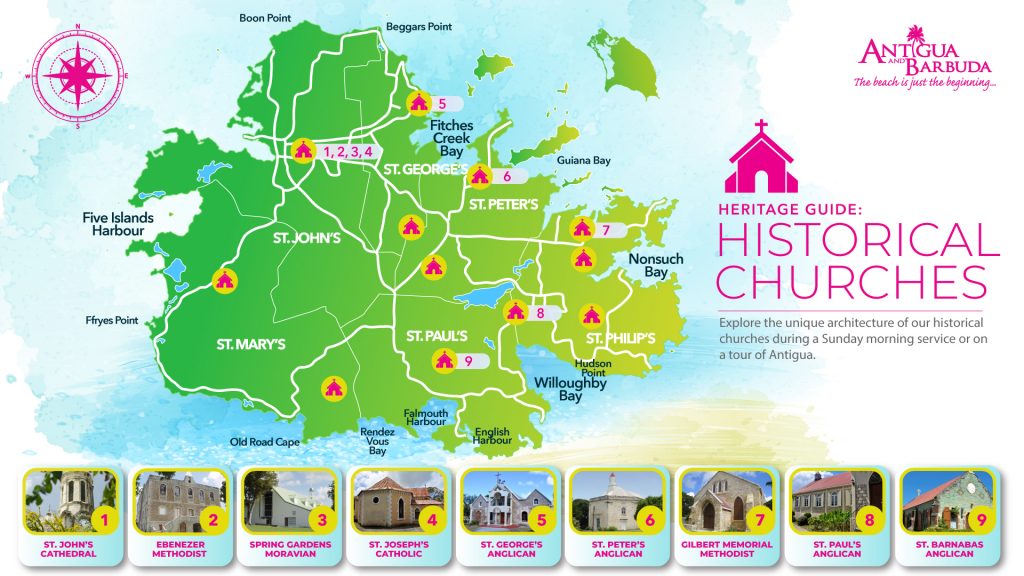
Antigua and Barbuda has had a long and rich history and culture of religions activities and development. From the early days of settlement, colonization was linked with religion and among the first buildings to be erected for social services and administration was churches. With the establishment of Parishes, churches soon followed to provide the social and religions needs, such as marriages, burials, and the keeping of the related records and documents. Churches and the “church halls” were the first schoolrooms and the centers of festive and social life. The first and official church of Antigua was the Anglican or Church of England. It was the Planters’ church and did not provide service for blacks, slaves, colored people or Catholics. In the mid-18th century, Quakers, Methodists and Moravians began to settle on Antigua. Their numbers were small, but their religions dedication, anti-slavery doctrine, and policy of education for all had much appeal to the poor and enslaved. These “newer” unofficial religious groups, particularly the Methodists and Moravians were the first to educate the slaves and to ultimately revolutionize the education systems of the region.
Several of these early churches remain standing but a few have been expanded, modernized and the tombstones in their cemeteries devastated. Regardless they are valuable cultural heritage resources that were built by enslaved Africans. This document will only focus on them in an effort to create an educational tour into the religious history of Antigua, its associated architecture and social development.
Explore the unique architecture of our historical churches during a Sunday morning service or on a tour of Antigua.
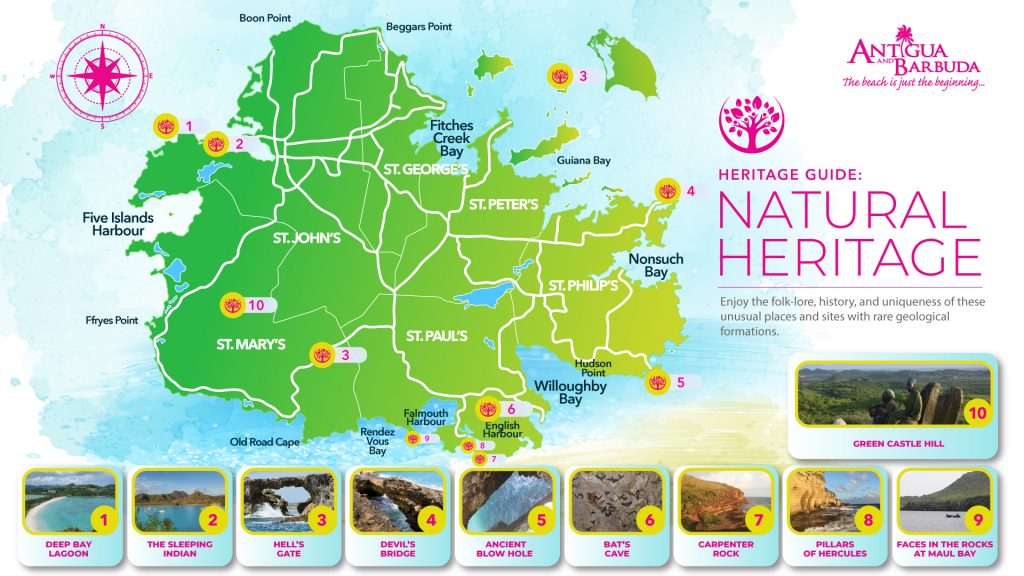
These are unusual places and sites with rare geological natural formations in Antigua. Most will require hiking and some walking, a bit of rock scrambling, but for the adventurous, it will be well worth the effort. This tour is for the fit and will require a local guide.
Sites include:
- Greencastle Hill and its megaliths
- Devil’s Bridge
- The Sleeping Indian, viewed from the road to Galley Bay
- Deep Bay Lagoon and Beach from Ft. Barrington
- The natural arch and ancient blow hole at Half Moon Bay
- The Faces in the rocks at Maul Bay viewed from the beach in Falmouth
- The Lookout Trail to Carpenter Rock
- The Pillars of Hercules
- The cave and petroglyphs at Two Foot Bay Barbuda
- Bat’s Cave
- Hell’s Gate Island
Enjoy the folk-lore history and uniqueness of these unusual places and sites in Antigua with rare geological formations.
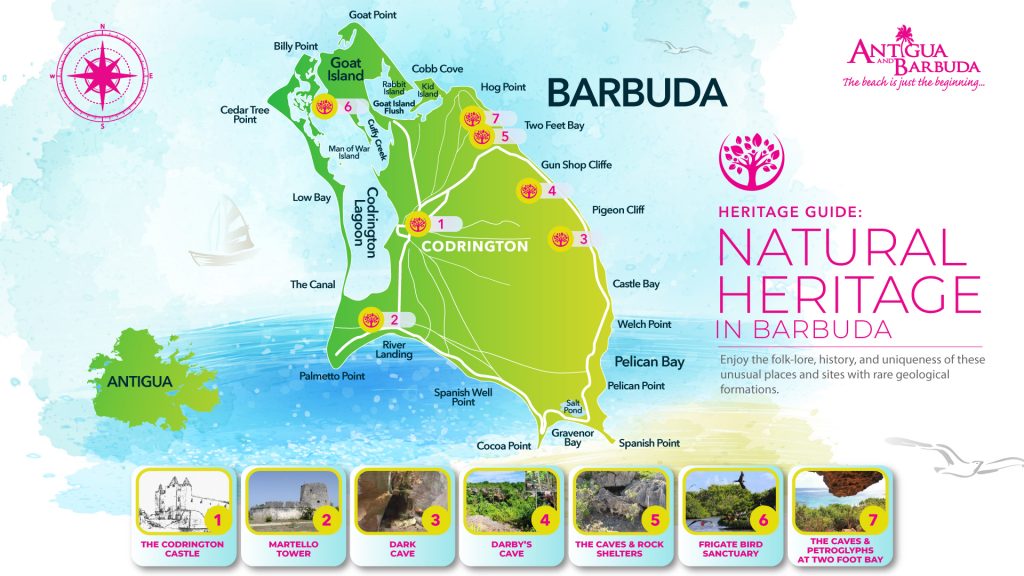
With mysterious abandoned forts, Neolithic caves and beachfront untouched since the days of Christopher Columbus, Barbuda is both the deepest retreat into solitude you could dream of and an untouched world of legend for you to explore. This magnificent island is 62 sq miles or 14 miles in size, with a population of over 1500 people.
Enjoy the folk-lore history and uniqueness of these unusual places and sites with rare geological formation in Barbuda.
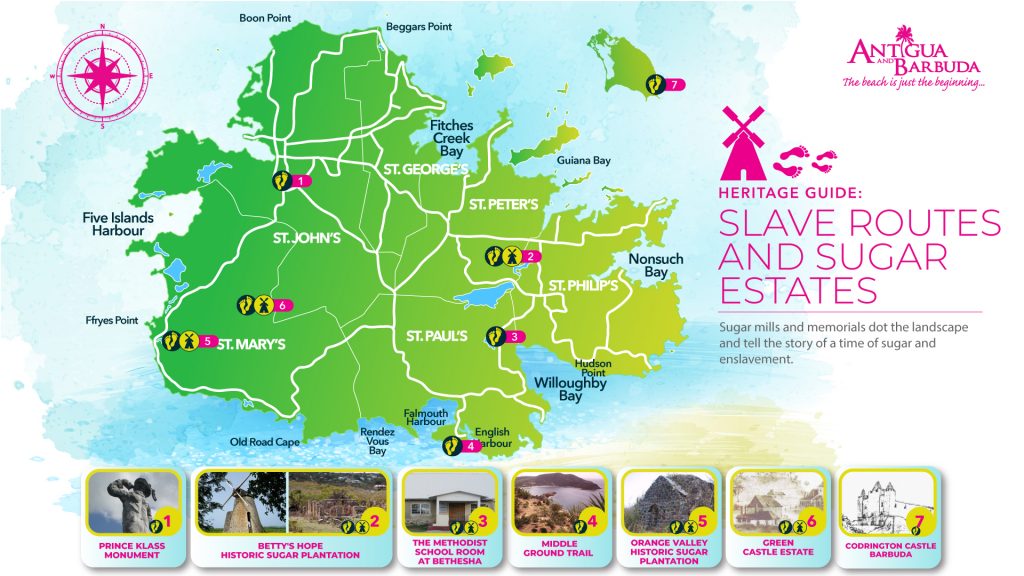
Sugar mills and memorials dot the landscape and tell the story of a time when Sugar was king.
It would be difficult to overestimate the impact on Antigua’s history of sugar and slavery began on that fateful day in 1684 when Sir Christopher Codrington arrived. An enterprising man, Codrington had come to Antigua to find out if the island would support the sort of large-scale sugar cultivation that already flourished elsewhere in the Caribbean. His initial efforts proved to be quite successful, and over the next fifty years sugar cultivation and slavery on Antigua exploded. By the middle of the 18th century the island was dotted with more than 150 cane-processing windmills–each the focal point of a sizeable plantation. The majority of enslaved Africans worked on sugar plantations or in support of that industry. Relations were often uneasy and uprisings of the Africans were cruelly put down. The sugar industry was to continue for over three hundred years when tourism took over. Today over a hundred stone sugar mill towers dot Antigua’s landscape in mute evidence of bygone days.


